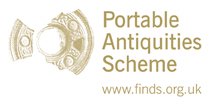Server check!
You are on the training database
Conservation and Scientific Analysis
Conservation
The facilities for conservation of Treasure finds are limited, and such work as is carried out is usually done at the national museums. Most items are not cleaned or conserved unless there is a danger that their condition deteriorates. This is because if they are to be acquired, the Code of Practice says that the valuation for the items will be for their worth 'as at the time of discovery'.
The exceptions are finds of coins, which sometimes require cleaning in order that they may be properly identified and catalogued. Depending on the number of coins and their condition, the job of cleaning them can take days, weeks or months. Due to the number of coins hoard found and their size, the British Museum's Conservation department usually has multiple coin hoards waiting to be cleaned at any given time.
Scientific Analysis
For some finds it may be necessary to test the metal content or the gemological nature of the item(s). This will be carried out by means of a non-destructive test using X-ray fluorescence (XRF) to test the surface content of metal items, and Raman spectroscopy to determine the nature of a gem. This will usually be performed by the national museum, for instance by the British Museum's Scientific Research Section, where the majority of scientific work is conducted.
There may also be a need for scientists to investigate particular elements of artefacts and the nature of their construction. The results of any such investigations or tests will be made available to the Coroner or Treasure Valuation Committee as appropriate.


